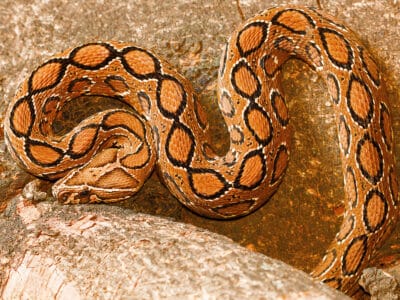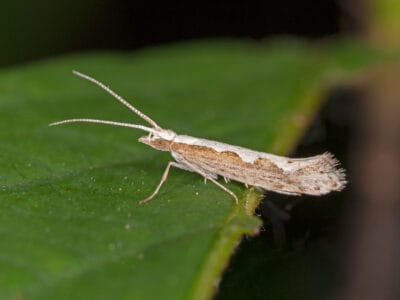Snook Fish
.jumbotron {
background-image: url(“https://a-z-animals.com/media/2022/04/shutterstock_1451625170-400×300.jpg”);
}
}
@media only screen and (min-width: 641px) and (max-width: 920px) {
.jumbotron {
background-image: url(“https://a-z-animals.com/media/2022/04/shutterstock_1451625170-470×370.jpg”);
}
}
@media only screen and (min-width: 921px) {
.jumbotron {
background-image: url(“https://a-z-animals.com/media/2022/04/shutterstock_1451625170.jpg”);
}
}
Snook Fish
Centropomus undecimalis
Males change into females after the spawning season
Snook Fish Scientific Classification
- Kingdom
- Animalia
- Phylum
- Chordata
- Class
- Actinopterygii
- Order
- Perciformes
- Family
- Centropomidae
- Genus
- Centropomus
- Scientific Name
- Centropomus undecimalis
Read our Complete Guide to Classification of Animals.
Snook Fish Conservation Status
Snook Fish Facts
- Prey
- Small fish, shrimp, crabs
- Group Behavior
-
- School
- Fun Fact
- Males change into females after the spawning season
- Estimated Population Size
- Unknown
- Biggest Threat
- Overfishing
- Most Distinctive Feature
- Lateral line black stripe
- Other Name(s)
- snoek, sergeant fish, robalo
- Gestation Period
- 28 hours
- Optimum pH Level
- 2
- Predators
- Humans, dolphins, osprey, heron
- Diet
- Carnivore
- Type
- Ray-finned
- Common Name
- Snook
- Number Of Species
- 12
This post may contain affiliate links to our partners like Chewy, Amazon, and others. Purchasing through these helps us further the A-Z Animals mission to educate about the world’s species..

Spiders that fly! Fish that walk! And 1000+ more incredible animals. Discover them all for FREE
.photo-gallery {
–margin: 0px auto 0px;
–padding: 0px 0px 0px 0px;
}
.gallery-link {
background-image: url(“https://a-z-animals.com/media/2022/04/shutterstock_126896627-1024×614.jpg”);
background-repeat: no-repeat;
background-size: cover;
background-position: center;
height: 500px;
justify-content: center;
text-align: center;
align-items: center;
display: flex;
border: 2px solid #000;
}
.gallery-link img {
height: 50%;
}
@media only screen and (max-width: 768px) {
.gallery-link {
height: 300px !important;
}
}
View all of the Snook Fish images!
Snook, also known by the Dutch name snoek, which means “pike,” sergeant fish, or Spanish name robalo, is a fish commonly found off the Florida coast.
Although prohibited from commercial sale in Florida to help protect its population, the fish is popular with recreational anglers. One of the most unusual traits of this fish is its ability to change genders for reproductive purposes.
5 Snook Facts
- Able to change gender during spawning season
- All varieties feature a black lateral line
- Unavailable commercially in Florida to protect its numbers
- Its diet of bait species influences its flavor
- Females lay as many as a million eggs at a time
Snook Classification and Scientific Name
The Snook’s scientific name is Centropomus undecimalis. Some other names for this fish include snoek, robalo, or sergeant fish. These fish are part of the Perciformes order consisting of the ray-finned fish. The family this fish belongs to is Centropomidae.
Snook Appearance
The Snook has a relatively dull appearance, with light gray scales. One standout feature is the black lateral line spanning the body length. However, the fish may have caudal and pelvic fins that turn bright yellow during the spawning season. The largest Snook caught on record, at 53 lbs., was caught in Costa Rica.
Snook Distribution, Population, and Habitat
Since 2012, research has uncovered a decline in carrying capacity among Snook populations in the Atlantic and the Gulf of Mexico. Overfishing is a likely cause of some of the decline in numbers, despite Snook having Least Concern species status. Because these fish inhabit relatively shallow waters, they might suffer more effects from coastal pollution, one of the facts that concerns many researchers.
These fish sometimes vary their range based on the water temperature. Sometimes these fish will venture into rivers or lakes that feed into the ocean. One event that causes significant casualties among these fish is a rare winter storm that lowers water temperatures drastically.
Its conservation status is listed as Least Concern according to the IUCN Red List.
Where to find: Snook and How to Catch Them
Snook range as far south as the Atlantic Ocean waters off Rio de Janeiro and have, relatively rarely, been found as far north as New York. These fish prefer warmer water for the most part. Catching Snook is easy in areas with a depth of about 60 ft. using the correct type of bait.
Snook Predators and Prey
Snook are potentially vulnerable to the effects of climate change and overfishing. Unseasonably cold water during some storms stuns young fish. Oil drilling and other human activities in the Gulf of Mexico threaten this species’ healthy numbers.
What Eats Snook?
Humans are one of the most significant predators that feed on these fish. Dolphins also eat these fish. Larger fish species may also feed on Snook. Birds like Heron and Osprey may also eat these fish.
Snook fight when hooked on a fishing line and also fights off would-be predators fairly aggressively. This fish has coloring that allows it to blend in more effectively than some more colorful species.
What Do Snook Eat?
Snook eat a diet of smaller species like shrimp and baby crabs. This species may eat smaller types of pelagic fish when readily available.
Snook Reproduction and Lifespan
Snook go through spawning between April and October, with the peak occurring during June and July. One of the most interesting reproductive details about Snook is that they are protandrous hermaphrodites. A male can begin the spawning season as a male and then transition into a female.
When Snook spawn, they release about 1.5 million eggs every other day. These eggs hatch after 28 hours. Larvae find estuary areas that are nutrient-rich after hatching. Once the young Snook are about a year old, they are old enough to live with the adults.
These fish reach sexual maturity when they are between two and three years old. These fish have a long lifespan, often making it to 15-21 years old.
Snook in Fishing and Cooking
Snook is a popular recreational fish, although Florida has restricted commercial fishing to help keep the population numbers up. These fish are relatively easy to catch in canal areas close to piers. Casting out a long line is a good way to catch one of these fish.
The best times to catch Snook are during the winter months. These fish will move into shallower waters to find warmth. An estimated one million Snook are caught every year in the Gulf of Mexico and nearby waters.
Snook has a mild taste, and the meat is firm. However, this fish has an unpleasant soapy taste if cooked the skin on. Snook is most popular in the United States, although it is often prepared in the Caribbean, Central, and South America. Snook is a popular fish for people on diets, containing 27 calories, 18 g of protein, and 0 g of carbohydrates.
This fish, low in fat, is served in many different ways. Baked Snook, which may feature Italian and other herbs, is a popular way to prepare the fish without a lot of fat.
Pan-frying this fish in coconut broth is a popular Asian-influenced recipe. Another popular way to serve this fish is barbequed.
View all 186 animals that start with S
Snook Fish FAQs (Frequently Asked Questions)
Is snook a good fish to eat?
Snook is a good fish to eat due to its low fat content and its consumption of shrimp and crustaceans, providing a more delicate flavor.
What does snook taste like?
Snook has a delicate flavor compared to most fish, which means that the amount of spice you use should be minimal.
What kind of a fish is a snook?
A Snook is part of the Centropomidae family and Perciformes order.
Is a snook a freshwater or saltwater fish?
Snook can be found in either environment but is a saltwater species that lives in freshwater environments temporarily instead of permanently, one of the lesser-known facts about this fish for many.
How big are snook fish?
Snook may measure up to 48 in. long and weigh up to 29 lbs.
How do you fish for snook?
You fish for Snook using a long line with bait like shrimp that these fish regularly feed on in the wild.
Sources
- Florida Fish and Wildlife Conservation Commission, Available here: https://myfwc.com/wildlifehabitats/profiles/saltwater/snook/snook/
- Encyclopedia of Life, Available here: http://eol.org/pages/205157/details#diagnostic_description
- IFGA, Available here: http://wrec.igfa.org/WRecordsList.aspx?lc=AllTackle&cn=Snook,%20common
- University of South Florida, Available here: https://digitalcommons.usf.edu/cgi/viewcontent.cgi?article=4844&context=ujmm
- Texas Parks & Wildlife, Available here: https://tpwd.texas.gov/huntwild/wild/species/snook/
- Orvis, Available here: https://news.orvis.com/fly-fishing/fishi-facts-common-snook-centropomus-undecimalis
- Florida Museum, Available here: https://www.floridamuseum.ufl.edu/discover-fish/species-profiles/centropomus-undecimalis/
- Florida Go Fishing, Available here: https://www.floridagofishing.com/species/snook.html
- Animal Diversity Web, Available here: https://animaldiversity.org/accounts/Centropomus_undecimalis/
- University of Florida, Available here: https://blogs.ifas.ufl.edu/charlotteco/2019/06/14/the-life-cycle-of-common-snook
- Bass Online, Available here: https://bassonline.com/freshwater-species/snook/
- Florida Fish and Wildlife Conservation Commission, Available here: https://myfwc.com/wildlifehabitats/profiles/saltwater/snook/snook/
- The Atlantic, Available here: https://www.theatlantic.com/health/archive/2009/11/snook-a-prized-but-protected-fish/29522/
















